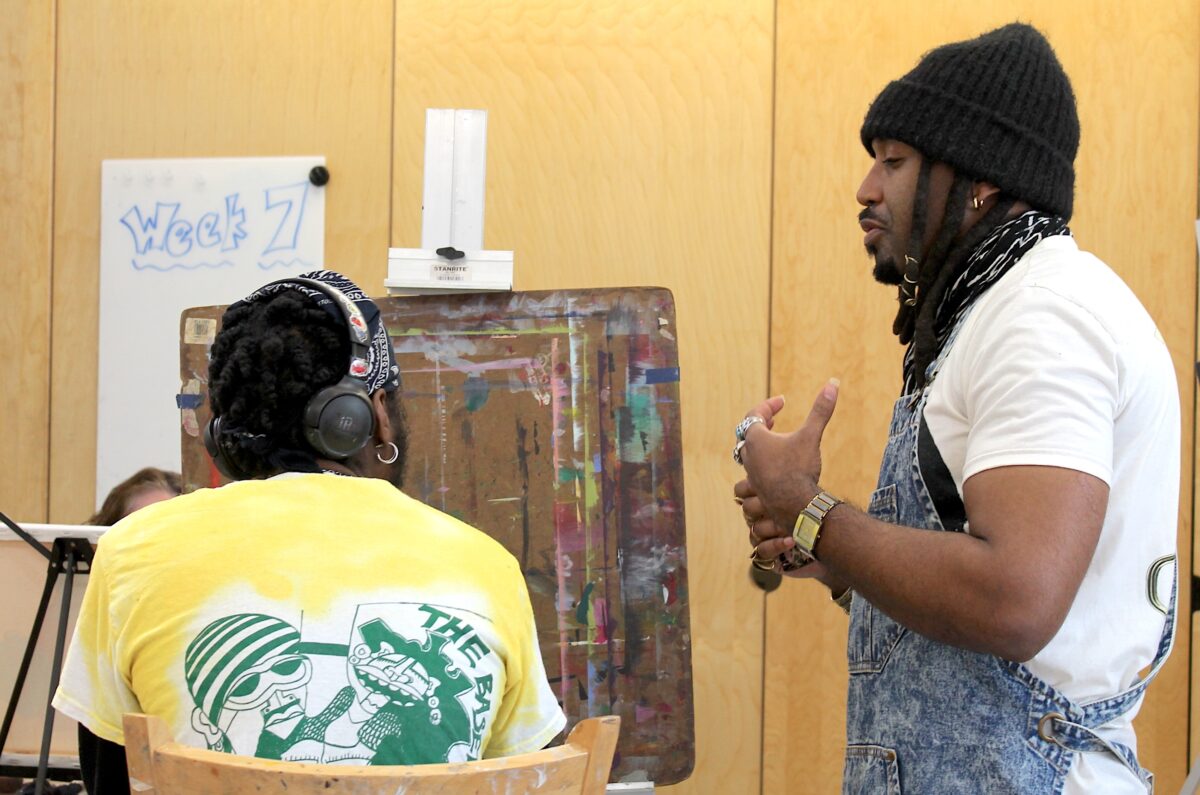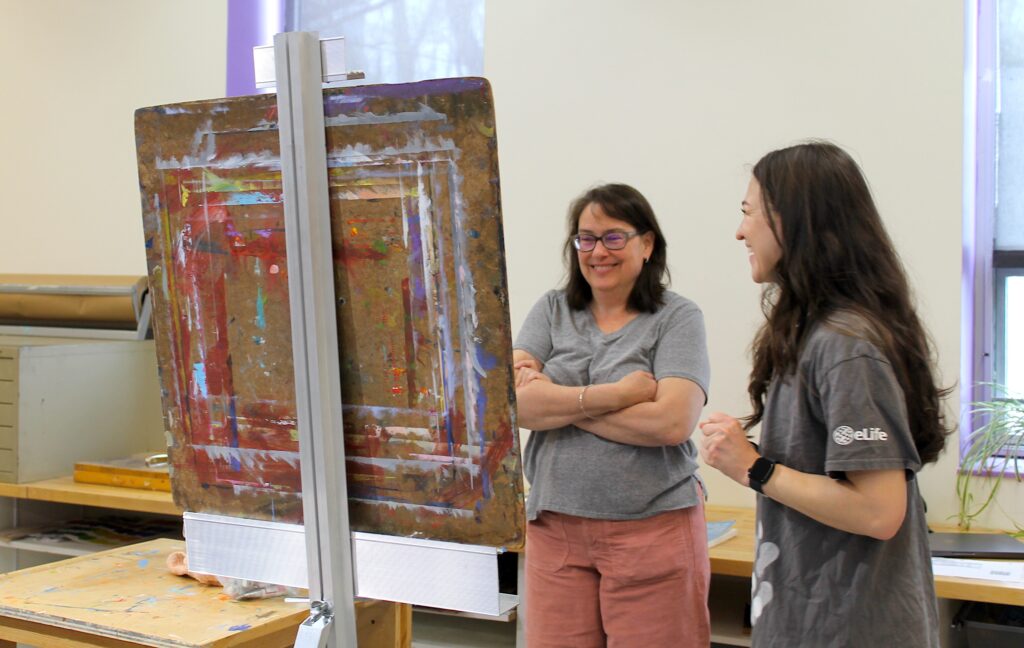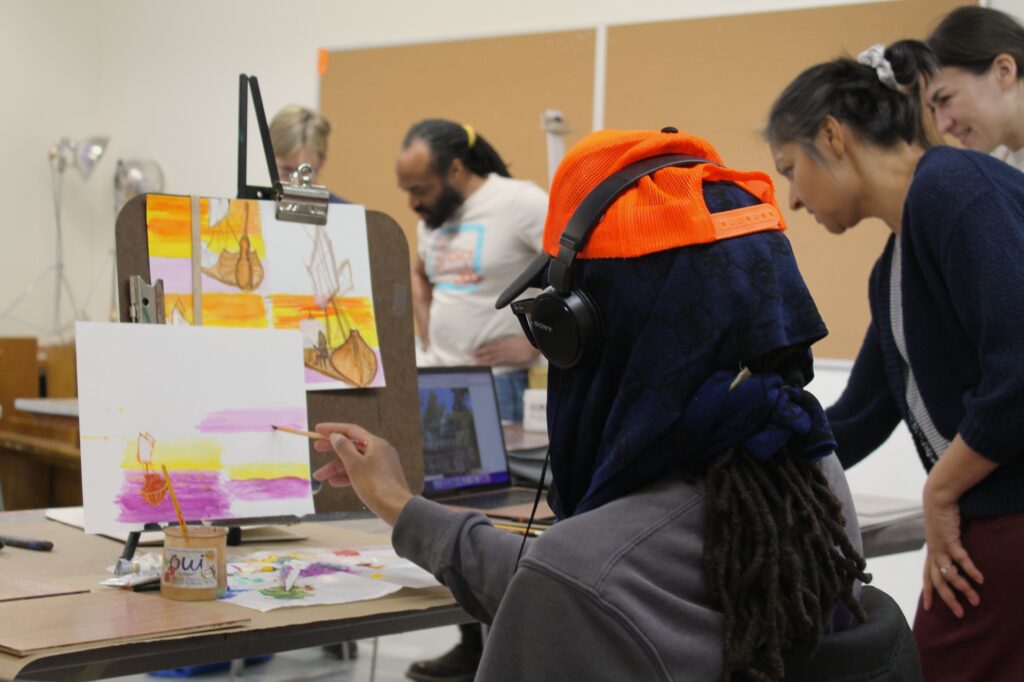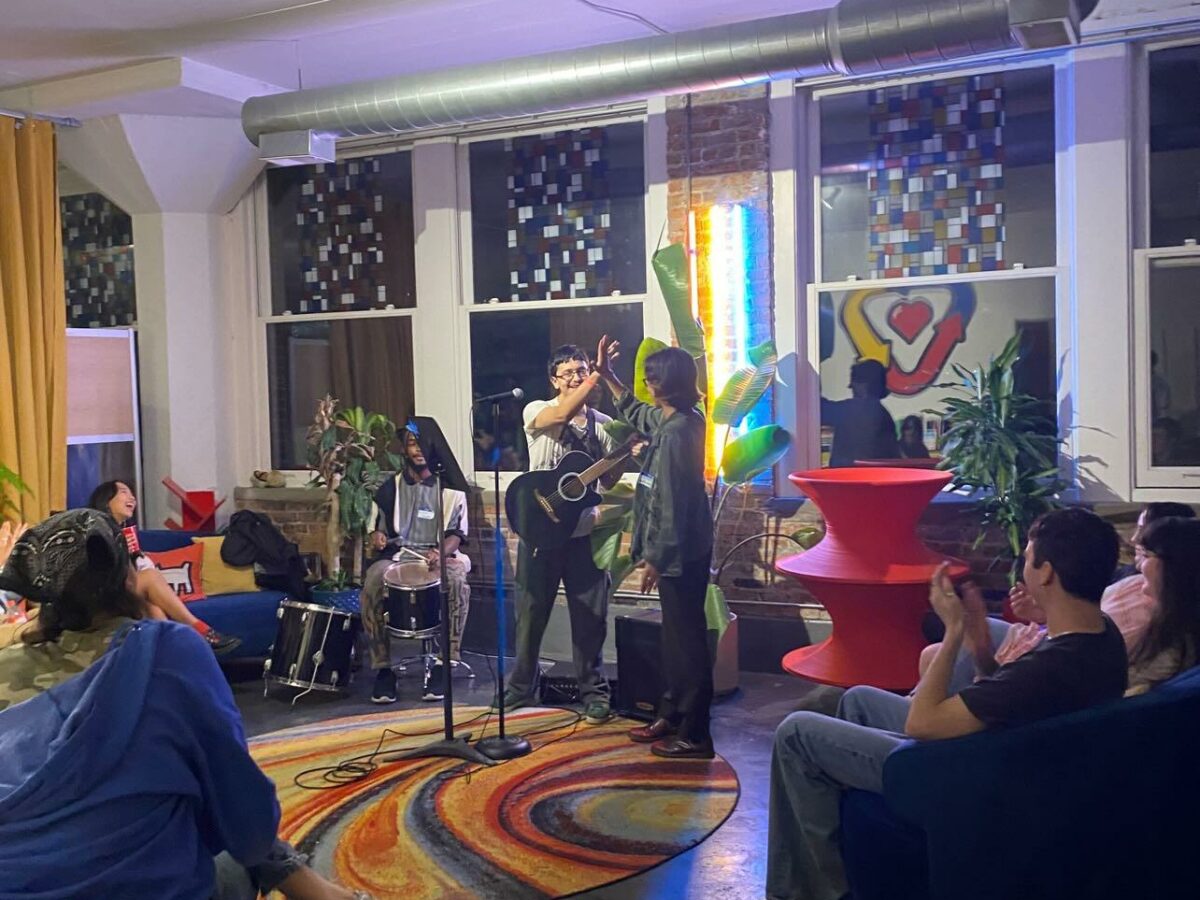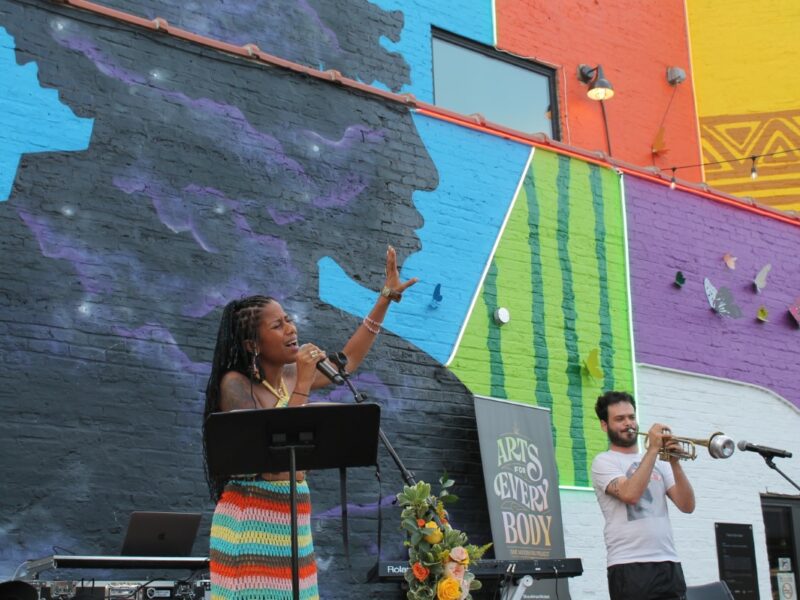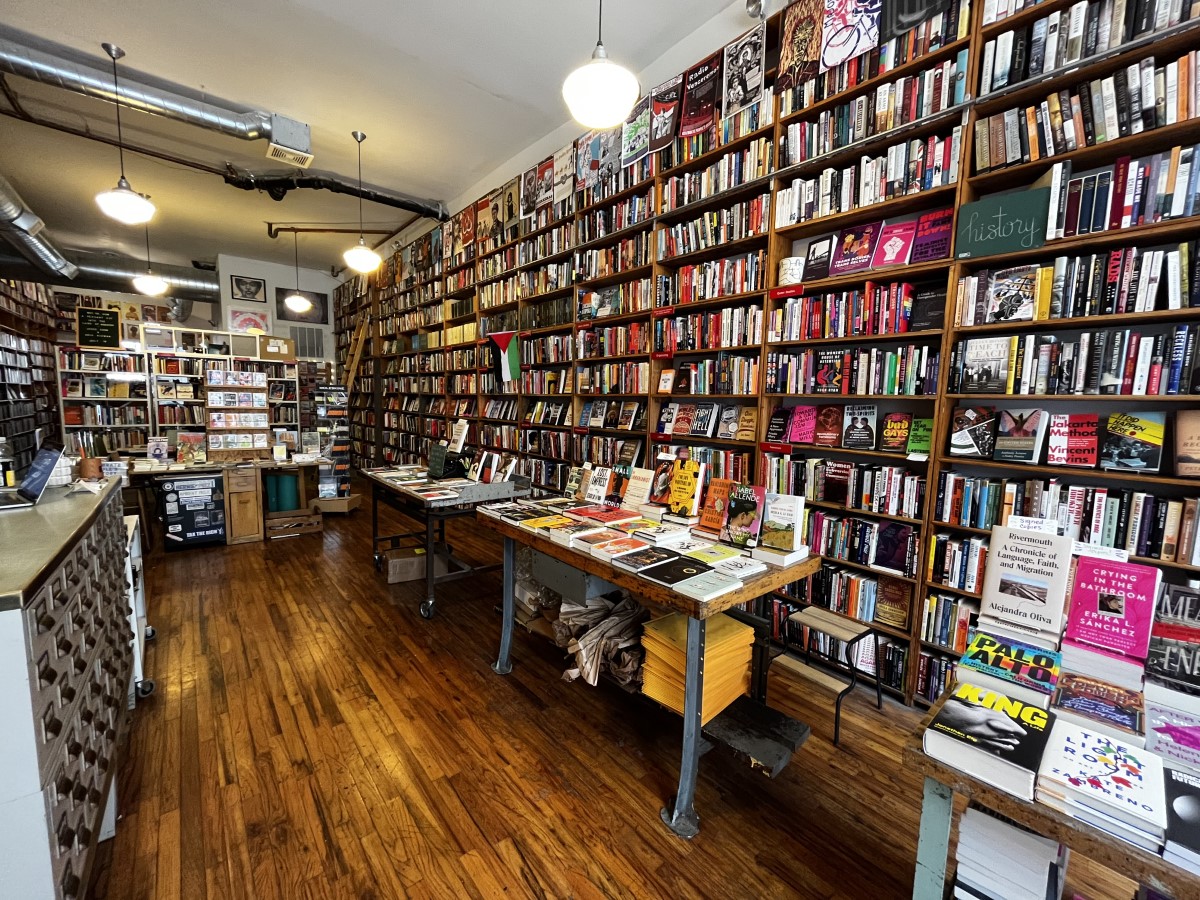At 11:59am on a Tuesday, hundreds of Chicagoans eagerly watched the time on their phones, laptops, and tablets. At noon the event of the season would begin: registration for classes at the Hyde Park Art Center (HPAC).
The center’s Oakman Clinton School and Studio didn’t always inspire the level of enthusiasm usually reserved for concert ticket sales. The need for social connection post-2020 and the lifting of financial barriers to arts education has skyrocketed the art center’s popularity.
“We have such robust waitlists—people are knocking on the studio door just to get in,” said Sarita Garcia, HPAC’s school studio coordinator.
At a moment when the national social and political climate is driven by divisiveness, social isolation and economic fear, the Hyde Park Art Center is opening its doors wider and inviting students to come as they are.
In April 2024, the center’s Oakman Clinton School and Studio became the first all-ages art school with without fixed tuition for classes. The transition to a contribute-what-you-can Open Arts model has increased enrollments by 50 percent with over 500 students enrolled per term and more than 2,000 enrollments annually.
“We say ‘contribute what you can’ because showing up and being a student—being a part of that learning environment—is a contribution,” said co-executive director Aaron Rodgers. “If you’re doing that, that is a value that we recognize and it’s part of how the courses thrive.”
If you walk into Studio C at the Hyde Park Art Center on a weekday afternoon, you might encounter a massive portrait oil painting, witness a riveting lecture on composition, or hear the playful chatter of an end-of-term pizza party. What you’re guaranteed to find is a student body representing a wide range of ages, races, genders and artistic experience.
“Established artists are sitting right next to an emerging artist,” said Garcia. “Someone who’s sixty-five-plus is right next to a person who’s just going into college. I think that’s been really cool to see how diverse our community has become.”
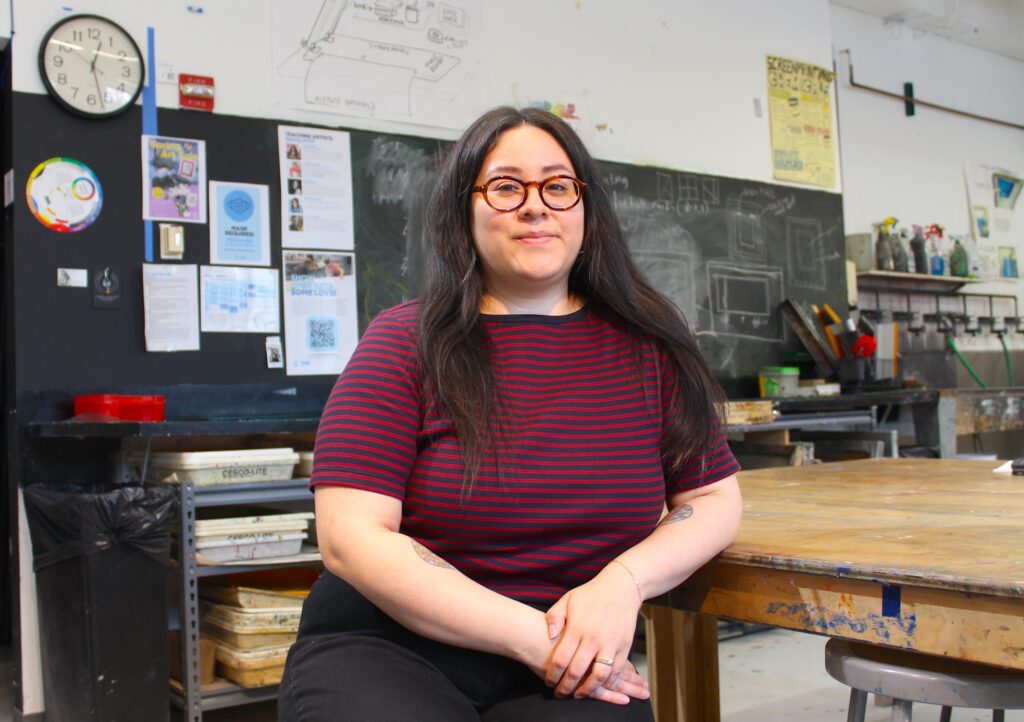
Founded in 1939, the Hyde Park Art Center has cycled through many locations and structures. Moving to its current building at 5020 S. Cornell Ave. in 2006 provided a space with the potential to serve the thousands of students and visitors that engage with the art center each year.
The idea for Open Arts started in 2012 and began implementation in 2016, with a few classes switching from a tuition-based to sliding scale registration. For years leading up to the transition, many classes whose registration fees could reach between $280-$350 struggled to meet the five-student minimum enrollment. Art center admin would sometimes call students to try to convince them to sign up.
“Because of the tuition, the financial burdens, a lot of people didn’t have access to this creative community. So we do want to open the doors,” Rodgers said. “It’s just been way more popular than we ever anticipated. We thought it would boost class sizes, but we had no sense [of] the demand that exists on the South Side for arts education and for community arts.”
With HPAC’s rapid growth under the new Open Arts model, administrators have dedicated their time and energy to finding innovative ways to manage the growth.
Tanya Gills, a professional oil painter, has been a teaching artist at the Art Center for four years. After completing an artist in residence program, she wanted to stay connected. Gills witnessed HPAC’s transformation from tuition-based classes to its current model.
“I really appreciate how the Hyde Park Art Center did the shift very thoughtfully and slowly to make sure that they understood these quirks that were going to come up,” she said.
One of those quirks has been developing a registration system that can accommodate a high volume of registrants with a wide range of technological savvy and access.
HPAC’s unique system has a special feature that holds a student’s class registration for ten minutes so they can contemplate what kind of financial contribution they want to make before completing registration.
A few months ago, HPAC also introduced a registration clinic where students of all backgrounds who need tech support can gather in the second floor digital lab to receive support with day-of class registration.
For students who have been working at HPAC for years, lack of access to high-demand spaces such as the ceramics studio resulted in frustration when the rapid registration process left some veteran students without a spot to practice their craft.
In response to the feedback, the center piloted a non-Open Arts course in ceramics to ensure dedicated students have access to studio space. Seats filled up quickly, with most eligible participants able to enroll. The course provides a year-round independent study in ceramics, offering a production space for experienced students.
Similarly, the development of an HPAC Student Advisory Council that meets regularly with staff has allowed for thoughtful critique and conversation, creating even greater “synergy” between students and staff, said Garcia.
“Before, my classes would be people either in college or just graduated from high school, and then people who are retired and maybe returning to painting after a career of work,” Gills said. Now, Gills marvels at the many age ranges and backgrounds that make up her Intermediate and Advanced Painting classes.
Aaron Allen, twenty-eight, and Isabell Hansen, twenty-six, are part of the new wave of students interested in exploring their own art practices. Allen and Hansen both live in Hyde Park and started taking painting classes at the art center for the first time this year.
For Hansen, it’s important to have a space outside of her academic environment as a graduate student at the University of Chicago studying molecular engineering. Still, the economic limitations of being a grad student make spaces like HPAC special.
“If I’m not in a place to be spending money, I’m not really visiting community locations,” said Hansen. “This [class] has been really nice, especially [the] open studio. I’m meeting people who aren’t even in my class, and talking about the art they’re doing—it’s really cool.”
Allen said he sees the art center as a way to meet more of his neighbors and gain access to the mentorship of professional artists.
“Most of my community is still [on the West Side], so this is something that has put me in touch with more folks that are from around here,” he said. “Having access to people who are professional artists and are great teachers—that’s just really the main draw for me. I’m happy I’m building my artistic community.”
Aaron Rodgers attributes the successful transition to Open Arts largely in part to the co-executive director leadership model HPAC adopted in 2022. HPAC’s board decided to elevate two pre-existing directors—Rodgers and Jeannette Tremblay Chambers—to share the executive director role right as Open Arts was beginning its public rollout.
Rodgers credits this unique structure rooted in mutual trust and respect as a major strength in successfully executing major initiatives and navigating unexpected challenges.
One year after removing fixed tuition prices from its classes, and at the height of its student population growth, HPAC leadership was faced with a hard decision as federal executive orders targeting diversity, equity and inclusion shook the art world.
In March, HPAC leadership shared a funding appeal letter to Hyde Park students, staff and donors, stating that after years of recurring funding from the National Endowment for the Arts (NEA), applying for funding under their new guidelines would require the organization to “alter our mission in ways we are unwilling to do.”
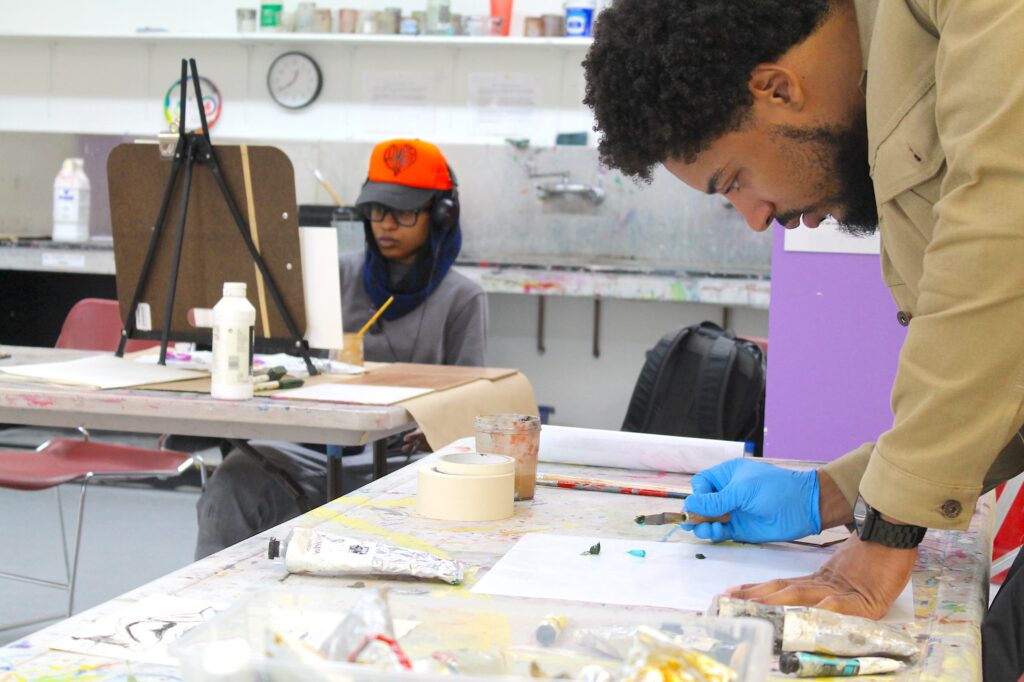
“The language [in] that executive order was really violent,” Rodgers said. “We are fortunate in the sense that it is a significant contribution that we’ve gotten from the federal government but it is by no means an existential one. We know that for other organizations, that’s not the case so this was a chance for us to really stand with those who we serve.”
As a result of their decision not to apply for NEA funding, the organization seeks to fill an anticipated $100,000 gap in its budget through community contributions.
“We’ve seen our neighbors, our students, [and] people who love art, support this organization in really meaningful ways for a long time,” Rodgers said. “People are absolutely stepping up at this moment.”
For Rodgers, the decision to divest from financial contributions that threatened HPAC’s values is simultaneously a commitment to equity, antiracism, and accessibility.
“We are part of a larger moment when a lot of our values are really being attacked and defunded,” he said. “It’s our responsibility to not only persevere and lead with our values, but inspire and build the arts community that Chicago and the South Side deserve, regardless of what’s happening politically or in the larger world.”
For teaching artists who facilitate classes and have their own art practice, the financial and structural supports the center offers are unique. Recently, teaching artists were classified as W-2 employees and given paid time off (PTO) as a part of their employment with the art center.
Garcia, who currently oversees the administrative management of the over 150 courses HPAC offers annually, started out as a teaching artist in 2021, teaching printmaking. She describes these new changes as “a safety net” for artists whose 1099 wages are often heavily taxed and who lack the workplace benefits that W-2 employees receive.
Similarly, recent renovations to studio spaces and staff hires to improve the student experience have been direct efforts to make HPAC’s work more sustainable.
As a result of the growing popularity of HPAC’s offerings, Gill was invited to introduce an additional Advanced Painting class this semester. The advanced class gives more seasoned painters who’ve taken her class multiple times an opportunity to continue community-building and learning.
Ronnie Clark has taken Gill’s class consistently for the last two years. As an elder living in Kenwood, she said she sees the space as therapeutic and enjoys the supportive multi-generational classroom culture.
“We have a class that’s more like a family than a class,” Clark said. “We all look out [for each other] and we can all learn from one another, regardless of your experience [level].”
Reggie McFly, thirty-seven, commutes from his home in South Loop to attend classes at HPAC and utilize its studio space. As an emerging painter whose living room doubles as his studio, having a focused space outside of his home to develop work has been hugely beneficial. The multigenerational nature of Gills’s class is a bonus.
“You get different levels of perspective [into] different parts of the journey of life,” McFly said. “It helps broaden your creativity.”
After taking the class a half dozen times, he considers it his “art family” and often feels inspired to “try something new that I never would have thought of if it was without this community,” he said. He often incorporates mixed media elements in his paintings—an artistic choice that’s encouraged and validated by his teacher and peers.
“People are here because they want to be here, and they have their own personal goals to reach,” Gills said. “What I love about teaching is that the class size is small, so I can give everyone very individualized attention.”
Gills also leverages HPAC’s exhibitions as teaching tools to help her students understand techniques displayed by the multicultural and multidisciplinary artists the center exhibits. She sees the classroom visits to look at other artworks as sources of inspiration that make for good conversation starters.
“When we come together as a group, there’s so much respect, and the dialogue is rich,” she said. She recalled a class from a few terms back where elders “had so many rich things to offer a younger artist who was just starting to explore issues. It was a beautiful conversation, and one that happened because of the different generations coming together.”
Gills noted that older artists have an appreciation for process and theory that balances well with the more results-oriented approach of younger artists.
The exponentially growing enrollment numbers reveal how “vital” community arts are, especially for adults and how much value people find in diverse community spaces, said Garcia.
While the art center has continued to add staff and classes, she hopes other arts organizations on the South Side and across the city will adopt similar arts education models and work together to address the need for accessible art spaces.
If the Open Arts model has proven anything, it’s that people are willing to invest in spaces where they feel seen, supported, and connected.
“This is all possible because a lot of people come here and give,” Rodgers said. “Hyde Park Arts Center thrives because a lot of people care about it.”
Jasmine is a writer, facilitator and community builder living in Hyde Park. You can learn more about her work at www.jasbarnes.com.

